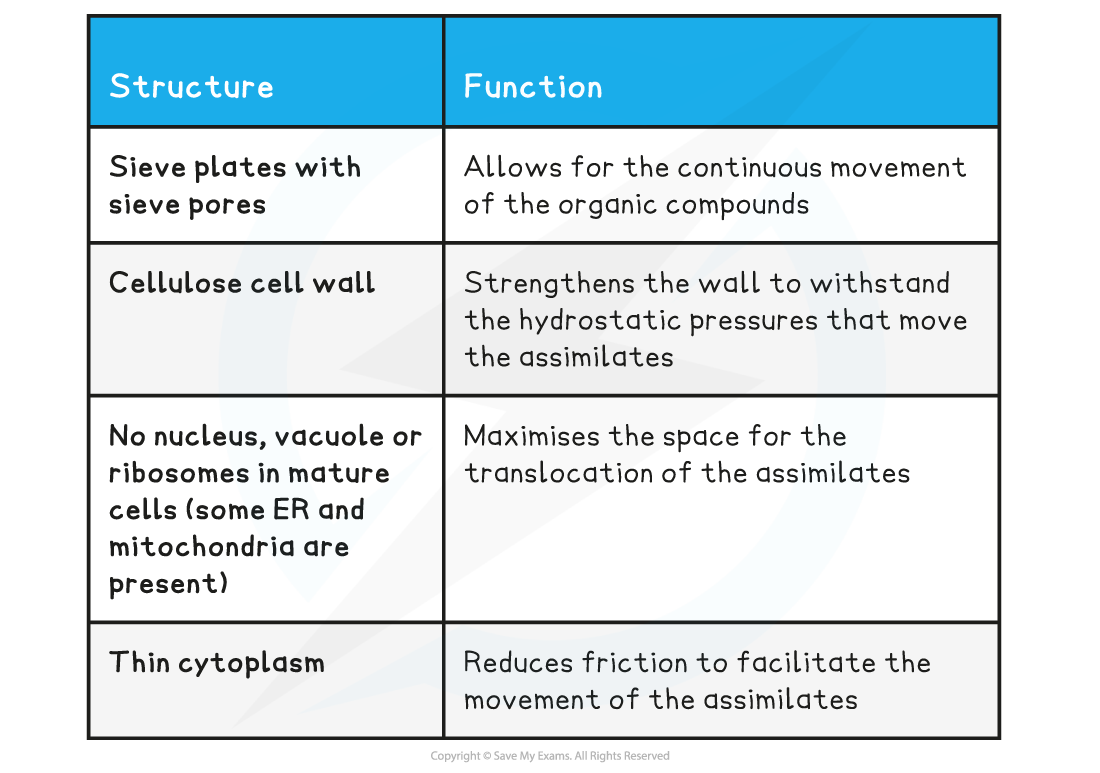Plant Stems (Edexcel A Level Biology (A) SNAB) : Revision Note
Plant Stems
Xylem vessels
The functions of xylem tissue in a plant are:
Vascular tissue that transports dissolved minerals and water around the plant
Structural support
Their cell walls contain lignin, which enables the vessels to withstand the pressure created by the moving column of water
Xylem vessels form long, hollow straw-like structures that are formed by dead cells (due to lignification of cell walls)
This means that they do not contain any cytoplasm or organelles that could slow down the flow of water
There are small regions in the walls that are not lignified, known as pits, which allows for lateral movement of water and minerals between xylem vessels

Images of xylem vessel elements: A = photomicrograph (drawing) in longitudinal section (lignin is stained red), B = scanning electron micrograph (drawing) in transverse section, C = microscope image (drawing) in transverse section (lignin is stained purple)
Structure and Function of Xylem Vessels Table

Sclerenchyma fibres
Sclerenchyma fibres are not involved in transport of substances, they provide support
Similar to xylem, they consist of bundles of dead cells
They form long, hollow tubes, but they do have end walls present
Lignification of cell walls occur, but they do not have pits like xylem vessels
They have more cellulose in their walls compared to other plant cells
Phloem tissue
The functions of phloem tissue in a plant are:
Transport organic compounds (assimilates), particularly sucrose, from sources (e.g. leaves) to sinks (e.g. roots). The transport of these compounds can occur up and down the plant
This is known as translocation
Phloem has no support function in a plant
The organic compounds are dissolved in water to form sap
Phloem is a complex tissue made up of various cell types; its bulk is made up of sieve tube elements which are the main conducting cells and companion cells
Other cell types of phloem tissue also include parenchyma for storage and strengthening fibres
Mature phloem tissue contains living cells, unlike xylem tissue

Structure of phloem tissue: A = microscope slide image (and below drawing) of a sieve tube element and companion cell in transverse section, B = photomicrograph image (and below drawing) of a sieve tube element and companion cell in longitudinal section

Structure of phloem tissue: C = transmission electron micrograph image (and drawing) of a sieve tube element and companion cell in transverse section
Sieve tube elements
Sieve tube elements line up end to end to form a continuous tube
Phloem Sieve Tube Elements Structure & Function Table

Companion cells
Each sieve tube element has a companion cell associated with it as companion cells control the metabolism of their associated sieve tube member
They also play a role in loading and unloading of sugars into the phloem sieve tube elements
Phloem Companion Cells Structure & Function Table

Vascular bundles in a stem
Vascular bundles consist of xylem vessels which are group together with phloem tissue
In a stem, the xylem vessels are always located towards the middle of the stem, while the phloem is located closer towards the outside of the stem
Sclerenchyma fibres are associated with the vascular bundles and provide additional support to the stem

Transverse section through a stem, showing the positions of phloem, xylem and sclerenchyma fibres

Longitudinal section through a stem, showing the positions of phloem, xylem and sclerenchyma fibres
Examiner Tips and Tricks
Understand the difference between sieve tube elements and companion cells, and how they are different to xylem tissue. Remember that mature xylem tissue is dead, so there is no evidence of organelles, and they have lignified cell walls, whereas sieve tube elements have no lignin, have sieve plates, and have companion cells that contain nuclei and cytoplasm.

You've read 0 of your 5 free revision notes this week
Sign up now. It’s free!
Did this page help you?
